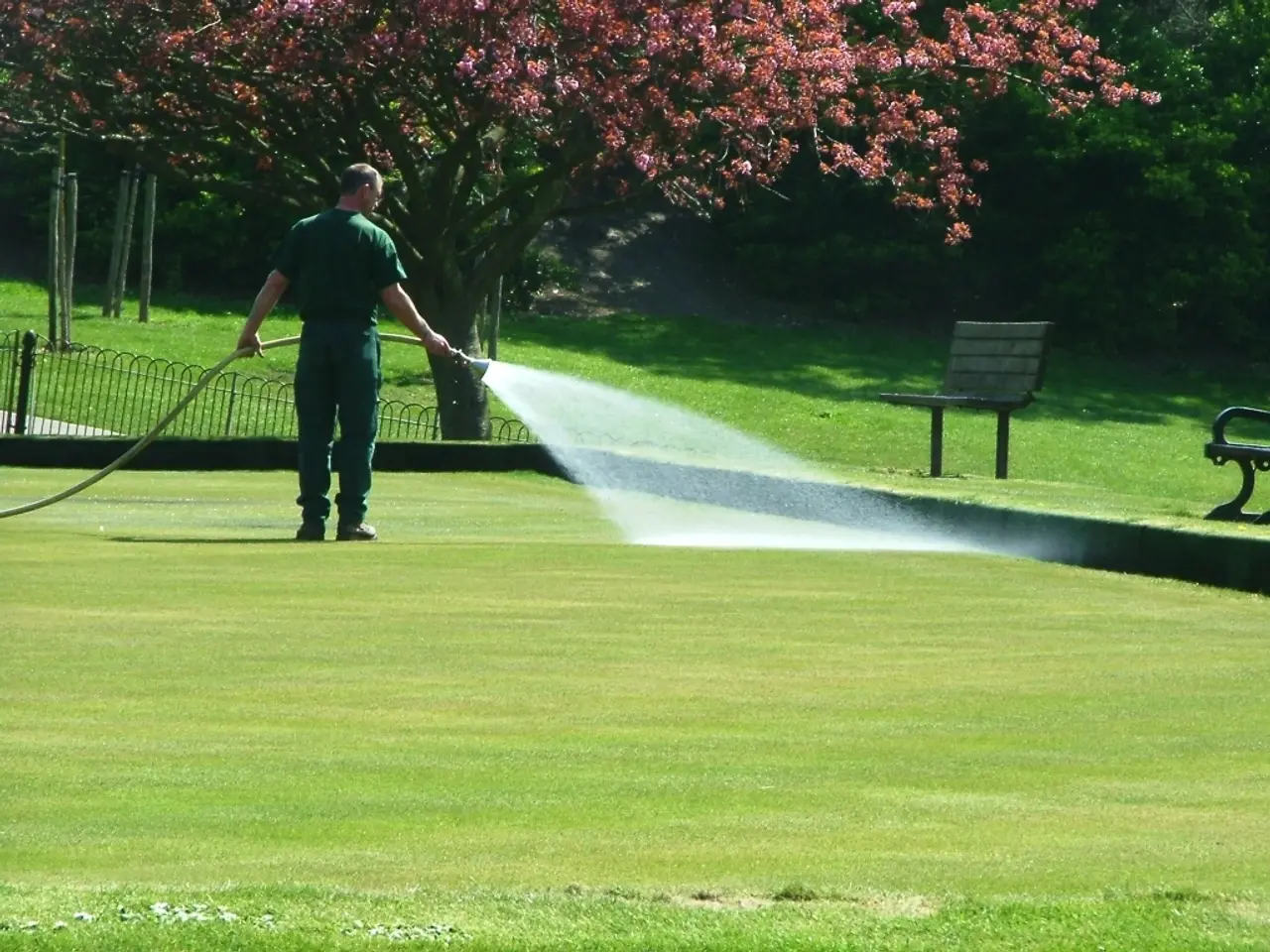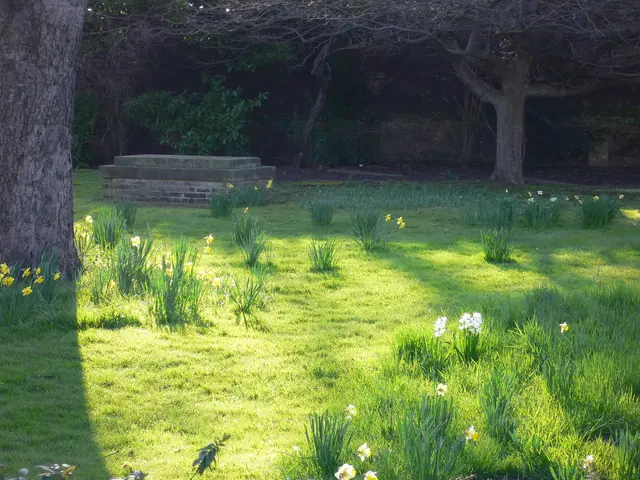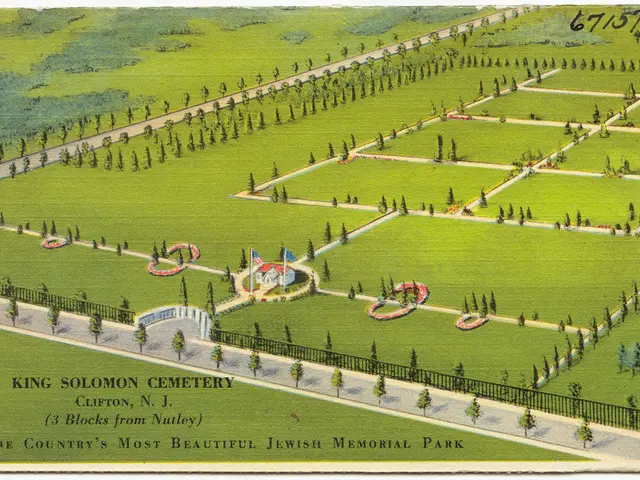Comprehensive Overview of Home Lawn Sprinkler Systems: Ideal Methods for Hydrating Your Lawn for a Vibrant, Emerald coat throughout the Summer Season
In the quest for a lush, green lawn, it's essential to strike a balance between watering adequately and avoiding overwatering. According to lawn watering guidelines, underwatering is preferable to overwatering, as the latter can lead to the development of diseases, more crabgrass, higher utility expenses, and wasted water.
For homeowners seeking precision and water efficiency, smart irrigation systems offer a solution. These innovative systems adapt to environmental conditions, optimising water use and promoting plant health.
One type of smart irrigation system is the Smart Environmental System, such as RainPoint Smart+. These systems use sensors and live weather feeds (rain, wind, freeze) along with site-specific conditions such as slope, soil type, and sun/shade exposure to customise watering schedules. Controlled through mobile apps, they allow for remote management and automated rain/weather delays to conserve water and reduce costs.
Wi-Fi enabled smart sprinklers are another option. These devices connect to your home Wi-Fi and allow real-time control and monitoring via smartphone apps. They adjust watering based on live weather conditions and forecast data to avoid overwatering or underwatering. Some include moisture sensors to detect soil hydration levels, automatically shutting off watering when adequate moisture is present, promoting water conservation and plant health.
Drip irrigation systems, while typically used for ornamental gardens or fruit or vegetable gardens, can also be employed for lawns, albeit at a higher cost and requiring professional installation. These targeted watering systems deliver water directly to the root zone, minimising evaporation.
Underground automated sprinkler systems are common for medium to large yards, involving buried pipes and pop-up sprinkler heads for uniform coverage. Systems like the Rain Bird 32ETI are automatic and include timers for scheduled watering, covering areas from 1,000 to 3,000 sq. ft. These systems are easy to maintain with retractable sprinklers and can be installed with some effort for a clean appearance.
Rotor and oscillating sprinkler systems are suitable for large yards due to their ability to throw water further. Rotor sprinklers offer adjustable radius settings for precise watering of larger areas and hard-to-reach spots, such as flower beds and shrubs. These can be integrated with smart controls to optimise water use based on environmental data.
For expansive properties, integrated smart irrigation systems combine weather data, soil moisture monitoring, and mobile app controls to automate and adapt watering schedules autonomously. These systems reduce manual oversight and adjust watering for humidity, rain forecast, and seasonal changes, ensuring efficient and healthy landscaping.
When it comes to watering your lawn, it's best to let it tell you when it's thirsty, indicated by a change in colour and footprints remaining. A lawn that turns a grayish-green colour and wilts needs immediate watering to recover quickly. Give your lawn 1 to 1.5 inches (2.5 to 3.8 cm) of water per week, applied all at once or in two applications.
To prevent overwatering, consider using an automatic shut-off valve. The most basic lawn irrigation system is a hose attached to a sprinkler, with the watering duration lasting at least two to three hours per location.
Susan Albert, a master gardener for 17 years, has contributed gardening articles and columns for various publications. If you prefer perpetually green grass, a specialized lawn irrigation system can help maintain it. If you don't mind the look of dormant grass, you may choose not to use a lawn watering system.
With the variety of smart lawn irrigation systems available on the market, each offering different features and suited to various yard sizes and watering needs, finding the right system for your lawn has never been easier. Smart irrigation systems emphasise water conservation, convenience, and lawn health through adaptive technology.
- For individuals interested in maximizing their home-and-garden lifestyle, smart irrigation systems can be a valuable asset, as they promote plant health, water efficiency, and environmental adaptability.
- To cultivate a lush, green lawn while minimizing overwatering, homeowners might consider investing in home-and-garden tools like smart irrigation systems, which can be integrated with weather data, soil moisture monitoring, and mobile app controls to ensure precise and efficient watering.








